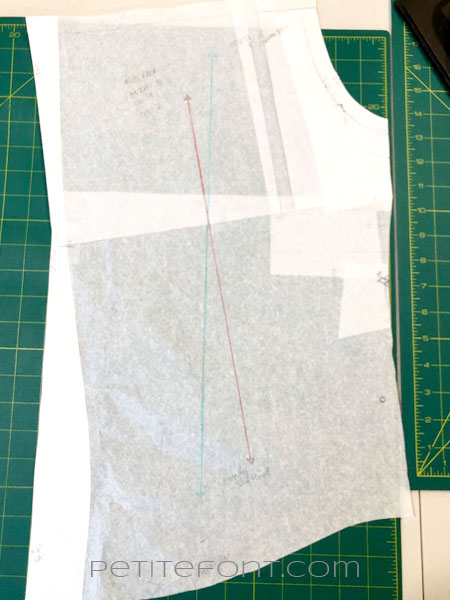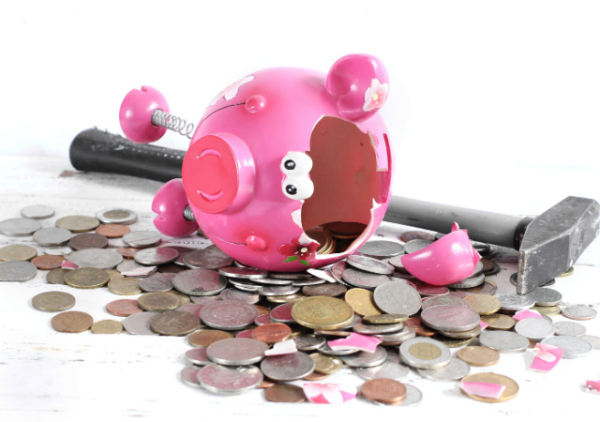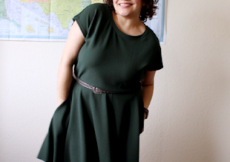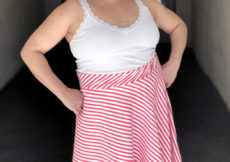
This post was updated in July 2020.
We all probably have random items around the house that qualify as unlikely sewing tools. There are plenty of articles written on the importance of sewing gadgets, from the most basic to some obscure ones. Those gizmos are all specifically made for the art and science of sewing.
What about those random items that sometimes make you think, “why do I even have that?” Oh, because you sew!
Here is a list of 6 otherwise random household items that make great sewing tools.
Unlikely Sewing Tool #1: Bow Compass
No, not the kind you use to find the North Star and navigate around the world in 80 days. This is a throwback to elementary school and usually comes packaged with a protractor.
Personally, I like the type where you can use your own pencil. Old school style.
The compass is great for two jobs: finding the proper distance from a bust point when rotating a dart, and adding seams allowances (since the distance will stay fixed all along a seam line). I actually saw that second one illustrated on a woodworking show, and realized I could do the same with fabric!
Unlikely Sewing Tool #2: Protractor
Feel like you’re back in school yet? Well, let’s bust out the mighty protractor!
This is great for finding the bias, which is always at 45° to your grainline. I had to use mine just recently for raising a cowl neckline that had plunged too low after a full bust adjustment.
Captain Obvious tip: there’s a TON of math in sewing!
Unlikely Sewing Tool #3: Colored Pencils
A good mechanical pencil is wonderful for tracing and making notes directly on patterns. So is a good eraser!
But when I have to redraw lines (such as grainlines or new darts), I like a colored pencil. They erase just like a regular pencil but give you a nice visual break from the black (or blue) lines of most patterns.
You don’t need a lot. I usually only use the blue, red, and green pencils in my pack. They stand out the best on white paper.
Redrawn grainlines:

Unlikely Sewing Tool #4: Loose Change

Specifically American quarters and nickels.
These are the perfect width for undoing the screws that come with my machine. You know, the ones for needles and feet?
My machine has a screwdriver for this, which is actually a giant PITA to use in the tiny space that is a sewing machine. An American 25 cent piece is perfect for this, and if I ever lose one, there’s probably another one in my loose change jar somewhere.
Or wallet.
Or in between the couch cushions.
Or in the piggybank.
You get the picture (no pun intended).
Unlikely Sewing Tool #1: Bacon Grill Press
Ok, so maybe you this one is a little more random. I know not everyone is bougie like me and has one of these in the kitchen that you have never used.
I received it as a gift from an old boss and had no idea it was actually for bacon. Yeah, it’s supposed to hold your bacon flat so it doesn’t curl up too much. Who knew?!
Either way, it’s never been used in my kitchen because its main job is holding down patterns. It’s an amazing pattern weight! I also use washers, but this big boy does all the heavy lifting holding.
Unlikely Sewing Tool #6: Medical Paper
You know when you go to the doctor and you have to lay on the table on top of a flimsy piece of paper? That’s what I’m talking about. It’s perfect for tracing patterns if you’re on #teamtrace and comes in generous 225-foot (68.58 m) lengths.
It’s especially great for tracing against a window!
But even if you cut your patterns, it’s a wonderful lightweight option for adding paper into gaps. I have to do a full bust adjustment on almost all patterns, but I can use the lighter weight paper to keep the pattern piece from becoming too heavy. It also folds up much easier than regular printing paper, as is obvious on this piece for my Elliot sweater.

I’ve bought 4 rolls in 4 years of sewing, so it lasts a long while.
What’s your favorite sewing tool that isn’t really meant for sewing? Should we compile a second list? Let me know in the comments what you like to use for “off-label” sewing!






